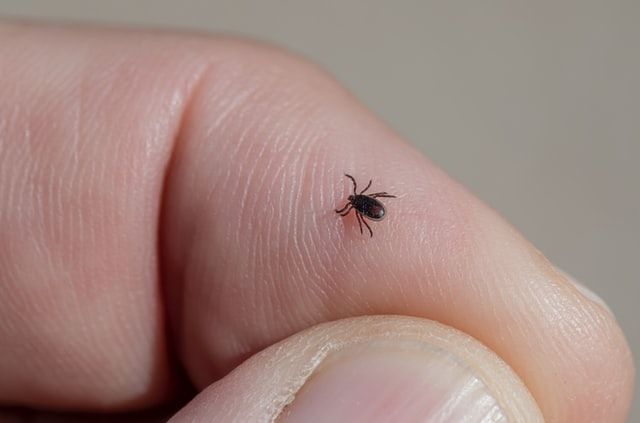
Tick-Bite Illnesses and the New Powassan Disease
As the weather warms up, many of us crave being outside. However, it is good to use caution to protect against tick-bite illnesses. Ticks seem invisible most of the time, but they can transmit sicknesses like Lyme disease, which affects about 476,000 Americans each year. Ticks are also responsible for the rare but sometimes deadly Powassan disease.
How Ticks Can Pose a Threat
The spread of ticks has increased in recent years, and so have tick-borne sicknesses. Most people contract tick-bite infections after engaging in outdoor activities like walking in the woods, hiking, camping, or gardening. While ticks typically go after small animals and rodents, they sometimes find their way to humans.
Tick-Bite Illnesses
A common type of tick-bite illness is Lyme disease. Black-legged or deer ticks can spread the Borrelia burgdorferi and Borrelia mayonii bacteria, causing the infection. Antibiotics can treat Lyme disease, and early treatment is typically better. Some patients experience post-treatment Lyme disease syndrome (PTLDS) and suffer symptoms like fatigue, pain, and cognitive difficulties that can last six months or longer.
Infected ticks can also spread the Powassan virus, which can infect the brain and cause encephalitis. Powassan can also invade the brain and spinal cord membranes and lead to meningitis. Symptoms of Powassan include fever, vomiting, headache, and general weakness. People can suffer more severe indications like loss of coordination, confusion, seizures, and speaking difficulties.
Although the virus causes only about 25 cases in the U.S. each year, instances of Powassan have increased in recent years, mainly in the Great Lakes and Northeast regions of the U.S. Powassan virus is extremely rare, but it can be fatal. Last April, a resident of Maine died from a Powassan virus infection.
Other tick-bite diseases include anaplasmosis, babesiosis, Bourbon virus, Colorado tick fever, and Rocky Mountain Spotted Fever. The Centers for Disease Control and Prevention (CDC) provides a tick bite data tracker that can help you monitor tick bites by region and time of the year.
Protecting Yourself against Ticks
Protecting yourself from tick bites requires a bit of vigilance before, during, and after spending time outdoors. Before going outside, know where the tick hotspots will be— usually tall grass, the woods, and bushy areas. Try to avoid these regions and stay in the center of walking trails as much as possible. You might also apply an EPA-approved bug repellent on exposed skin. Using permethrin on clothes, boots, and camping gear can provide additional defense.
Once you are back indoors, take a bath or shower to wash away any ticks on your body. Make sure to examine your clothing and pets before coming inside. When washing clothes, use the hot setting; warm and cold will not kill tickets. Set your dryer on high heat.
It’s worth the extra time to examine your body carefully, especially if you have been in your backyard or high-tick areas. You will need a mirror to get a full view, and be sure to check these areas:
- Back of the knees
- Belly button
- Between the legs
- Hair
- In and behind the ears
- Under the arms
- Waist
For extra precaution, make tick checks a daily habit, especially during the time of year when you are outside frequently. Consult your veterinarian about medicines and other measures to protect your pets from ticks.
Removing a Tick
If you find a tick on your body, do not panic. You can easily remove it to avoid infection, and do so as soon as you detect it:
- Use clean tweezers to grab the tick as close as possible to your skin. This increases the likelihood of pulling out the whole tick.
- Once you grasp the tick, pull upwards evenly and steadily. Avoid twisting the tick because it could cause parts to break off.
- If the tick’s mouth remains after pulling, grasp it with the tweezers. If it remains lodged in the skin, you can leave it alone and allow the skin to heal on its own.
- After removal, use alcohol or soap and water to clean the affected area.
- Dispose of the tick by placing it in alcohol, placing it in a sealed container or bag, flushing it down the toilet, or wrapping it in tape. Never use your fingers to crush it.
If you develop a fever, rash, or swelling at the bite area within the next few days, consult a doctor right away. If you need help with tick removal or have questions about aftercare, go to the CDC’s Tick Bite Bot for assistance.
Research and materials for this article were compiled, written, and distributed on behalf of the National Public Health Information Coalition. The views and opinions expressed in this blog are those of the various authors and do not necessarily reflect the official policy or position of the National Public Health Information Coalition or its members.
References
https://www.cdc.gov/lyme/stats/humancases.html
https://www.businessinsider.com/where-ticks-spread-disease-in-the-us-2018-7
https://www.cdc.gov/lyme/mayonii/index.html
https://www.cdc.gov/lyme/postlds/index.html
https://www.cdc.gov/powassan/index.html
https://www.cdc.gov/powassan/symptoms.html
https://www.cdc.gov/anaplasmosis/
https://www.cdc.gov/parasites/babesiosis/
https://www.cdc.gov/coloradotickfever/
https://www.cdc.gov/ticks/tickedvisits/index.html
https://www.cdc.gov/ticks/avoid/on_people.html
http://npic.orst.edu/factsheets/PermGen.html
https://www.maine.gov/tools/whatsnew/index.php?topic=Portal+News&id=7360066&v=article-2017

